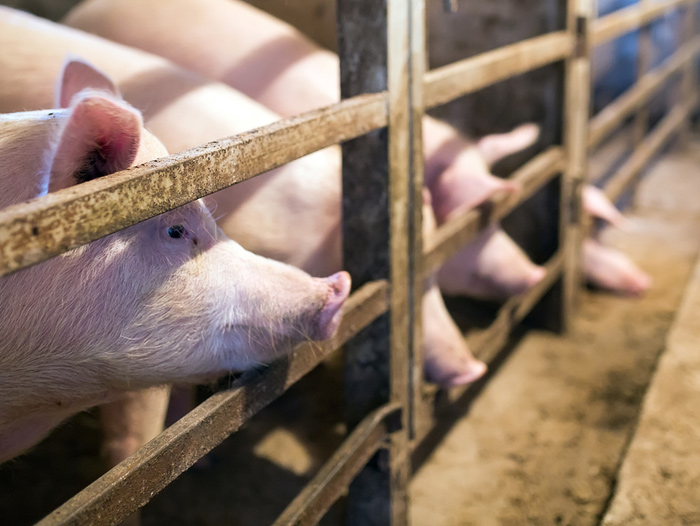Can Heritage Pork Scale Up?
February 5, 2019 | 2 min to read

In the winter of 2014, near Cambridge, Ontario, farmer Murray Thunberg made plans to acquire seven British Saddlebacks—lop-eared, black pigs with a white band running across their shoulders—with the intent to breed them. Thunberg already breeds Berkshires, Tamworths, Herefords, and Gloucestershire Old Spots, but the Saddlebacks are an especially rare heritage breed that hadn’t been registered in Canada for 30 years. He set up a GoFundMe campaign, raised over $2,000, and bought the small herd from a farmer in Vermont, becoming one of only a handful of farmers raising them in North America.
At the time, he explained his rational for taking on such a complex endeavor: “By breeding and raising heritage [pigs], some very precious genetics are being saved and expanded.” Now, he considers himself a guardian of the Saddlebacks; after four years of breeding the animals, and selling some to local chefs and farmers’ market customers, the herd has expanded to 18.
Until the late 1930s, heritage pigs were the norm on family farms, where they had access to pasture, forests, mud bath wallows, and good bedding. Their fat was seen as essential to human health. “Today those breeds do well on pasture because they have not lost their instincts to forage and graze,” says Ross Duffield, former farm manager at the Rodale Institute in Pennsylvania, an organic research farm with a mandate to work with heritage breeds to improve the soil and help farmers create a high-quality product.
To read the rest of the story, please go to: Civil Eats
